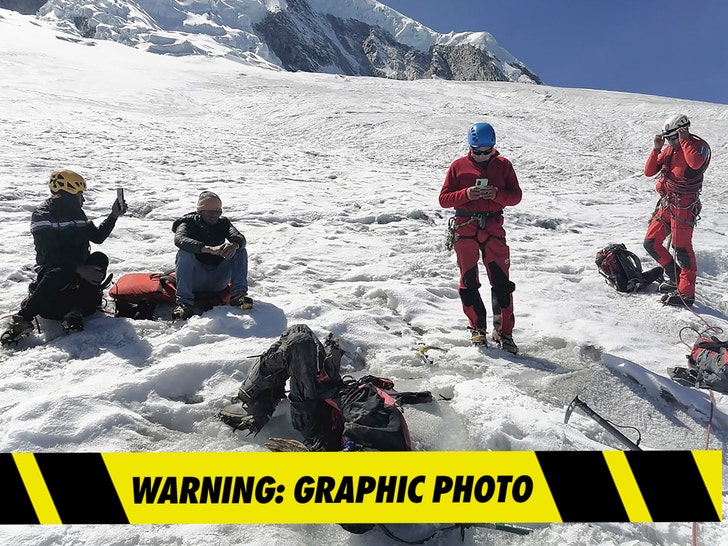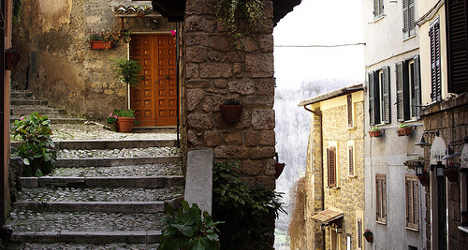Unearthing The Past: Recent Discoveries Of Mummified Bodies Around The World
The human fascination with mummified remains stretches back centuries, conjuring images of ancient pharaohs, elaborate burial rituals, and secrets preserved by time. Yet, these incredible discoveries aren't confined to archaeological digs in distant lands. In recent years, mummified bodies have been found in the most unexpected places – from thawing glaciers to urban building walls – each telling a unique, often poignant, story. These finds not only captivate our imagination but also offer insights into environmental changes, past lives, and even modern-day mysteries.
The Andes' Frozen Secrets: Climate Change Unearths the Lost
One of the most compelling narratives emerging from recent mummified body discoveries is the stark impact of climate change. As the world's glaciers recede at an alarming rate, they are beginning to reveal secrets they have held captive for decades, even centuries. The majestic Andes mountains in Peru, known for their towering peaks and expansive ice fields, have become a poignant example of this phenomenon.
William Stampfl: A Mountaineer's 22-Year Wait
On July 5, 2024, Peruvian police and mountain rescue workers recovered the mummified body of American mountaineer William Stampfl. Stampfl, 59, had been reported missing in June 2002 after an avalanche buried his climbing party while scaling Mount Huascarán, Peru's highest peak. For 22 years, his fate remained a mystery, until the relentless melting of the ice exposed his preserved remains. Authorities announced the discovery on Tuesday, July 9, 2024, confirming that climate change was the primary factor in his body being revealed.
- Curtain Bangs
- Jamaican Black Castor Oil Hair Growth Before And After
- Rihanna Gray Hair Color
- What Happened In 2014 Pop Culture
- Date Ideas Rainy Day
This discovery is not an isolated incident. The data indicates that the mummified remains of an American climber were found 22 years after he went missing while scaling a snowy peak in Peru, specifically linking it to the receding glaciers in Peru's highest mountain and surrounding area. The preserved body of an American mountaineer who was lost in an avalanche 22 years ago has indeed been found in the Andes, as confirmed by Peruvian police.
Stampfl's case echoes a similar, earlier find: the body of climber Marta Emilia Altamirano was found attached to a glacier in February 2023, nearly 42 years after she disappeared. These grim discoveries serve as powerful, albeit tragic, reminders of how rapidly our planet is changing, bringing long-lost individuals back into the light.
Urban Mysteries: Mummies in Unexpected Places
Beyond the remote wilderness, mummified bodies have also turned up in the most unlikely of urban settings, often during routine activities like construction or renovation. These finds often lead to complex forensic investigations, attempting to piece together the identity and story of the deceased.
- Jeremiah Vs Conrad
- Tarte Black Friday Sale 2024
- Shampoo For Dry Hair And Frizzy Hair
- Brunette With Red Undertones
- Amazon Finds For Women
The Oakland Convention Center Enigma
One of the most talked-about recent cases occurred in Oakland, California. A construction crew discovered what authorities described as a mummified body in the wall of the historic Henry J. Kaiser Convention Center, which was undergoing a remodel. A worker found the body around 1 p.m. on a Wednesday in a wall that was being deconstructed during renovations. The mummified body, found between the inner and outer walls of the abandoned center, was later identified as a 42-year-old man who had vanished nearly two years prior. Investigators announced on a Monday that they had identified the mummified body found inside a wall at Oakland's Kaiser Convention Center the previous month. Lt. Ray Kelly of the Alameda County Sheriff’s Office noted, “We found remains best described as mummified. The conditions in the walls were such that the body [preserved].” A serial number on a plate in his ankle eventually unlocked the mystery of his identity, highlighting the meticulous work of forensic teams.
Other Bizarre Domestic Discoveries
The Oakland case, while unique in its setting, is not the only instance of mummified remains being found in residential or commercial buildings:
- In New Orleans, a woman came under investigation after allegedly living with her 600-pound son's mummified remains for months in a house that was subsequently deemed a health hazard.
- Police searching for a missing person in Union City, South Bay, led to the discovery of a mummified body on a property.
- In Ohio, a mummified body was found hanging in a closet. Edward Brunton reportedly hanged himself with a belt in a closet in 2009, and his mummified remains were discovered years later.
- In another unsettling case, inside the home of a missing 95-year-old woman, police discovered the partially mummified body of a man who apparently died in the bathroom, seated on the toilet.
These discoveries underscore the often-hidden tragedies that can unfold within the confines of private dwellings, sometimes going unnoticed for extended periods until the elements or human intervention reveal them.
Remote and Unexplained: Mummies in the Wilderness
While glaciers and urban walls offer their own brand of mystery, remote wilderness areas also occasionally yield mummified remains, often raising more questions than answers.
The Colorado Rocky Mountains: A Chilling Discovery
Police were mystified after finding three “fairly mummified” bodies at a remote campsite in the Rocky Mountains in Colorado. Authorities believe the bodies may have belonged to two adult sisters and one woman’s adult son. One of the bodies was found in a wooded area, while the other two were still inside a small, zipped-up tent. This discovery prompted a significant investigation into the circumstances of their deaths and how their bodies came to be preserved in such a remote location.
Adding to the intrigue of Colorado's mummified finds, the body of a cult leader was also discovered mummified, without eyes, and enshrined with Christmas lights. Her death was later attributed to a combination of alcohol abuse, anorexia, and colloidal silver dosing, painting a bizarre and tragic picture of her final days.
Ancient Puzzles and Modern Hoaxes
Beyond the recent and often tragic discoveries, mummified bodies continue to emerge from ancient contexts, offering invaluable glimpses into human history and culture. However, the allure of mummified remains also makes them targets for misinterpretation and even deliberate hoaxes.
Austria's Cryptic Mummy
A mummified body, found within a crypt at St. Thomas am Blasenstein in Austria, has confounded researchers for centuries. The subject of local lore and superstitions, this ancient mummy continues to be a source of historical and scientific intrigue, demonstrating how natural mummification can occur in specific environmental conditions, preserving bodies for hundreds of years.
In a broader context of ancient finds, a directorate announced the discovery of the body of “an adult mummified male individual,” with a “relative chronology of 600 to 800 years old,” during a recent excavation. Such discoveries are crucial for understanding past civilizations and their practices.
The Nazca "Alien" Controversy
Not all claims of mummified bodies turn out to be what they seem. In 2015, a mummified body found near Nazca in Peru was controversially claimed to be that of an alien. However, subsequent scientific analysis later found it to be the remains of a human child. This incident serves as a cautionary tale, highlighting the importance of rigorous scientific investigation to distinguish genuine historical artifacts from elaborate hoaxes or misidentifications, especially when dealing with such captivating finds.
Conclusion
The recent discoveries of mummified bodies, from the frozen peaks of the Andes to the hidden walls of urban buildings, remind us that the past is never truly buried. Whether revealed by the forces of climate change, the march of urban development, or the grim circumstances of human tragedy, each mummified body carries a silent story, waiting to be told. These finds not only contribute to forensic science and historical understanding but also serve as powerful, often somber, reflections on life, loss, and the enduring mysteries of preservation.
Final Summary: Recent discoveries of mummified bodies highlight diverse circumstances of preservation, from climate change revealing lost mountaineers in Peru's Andes (like William Stampfl) to urban renovations uncovering remains in unexpected places like Oakland's Kaiser Convention Center. Other finds include tragic domestic situations, mysterious wilderness discoveries in Colorado, and ancient historical mummies. These cases underscore the ongoing fascination and scientific importance of mummified remains, while also cautioning against misinterpretations and hoaxes.
Article Recommendations
- Annie Andrews Congress
- Face Massage Before And After
- Why Was Taylor Swift Booed At Superbowl
- Does Sofia Vergara Have Fake Boobs
- Powerful Nail Colors



Detail Author:
- Name : Ebony Becker
- Username : whegmann
- Email : hkoepp@gaylord.com
- Birthdate : 1977-05-22
- Address : 714 Zula Passage Luettgenbury, NC 15846
- Phone : 469.968.3572
- Company : Aufderhar Inc
- Job : Bill and Account Collector
- Bio : Ut eos et possimus aliquam non officiis. Possimus velit dolorum nulla et quisquam. Sit esse porro repudiandae consequatur et. Alias reiciendis molestias officiis rem quasi.
Socials
twitter:
- url : https://twitter.com/aborer
- username : aborer
- bio : Et quisquam deleniti quia ab tenetur delectus. Asperiores eum dolor aut beatae cupiditate. Nihil consequuntur et in vitae deleniti vero placeat.
- followers : 1012
- following : 1669
linkedin:
- url : https://linkedin.com/in/adriana_official
- username : adriana_official
- bio : Sunt quia mollitia quaerat delectus et fuga id.
- followers : 5118
- following : 2442
tiktok:
- url : https://tiktok.com/@adriana.borer
- username : adriana.borer
- bio : Fuga ullam fugit repellendus perspiciatis inventore.
- followers : 3404
- following : 1051